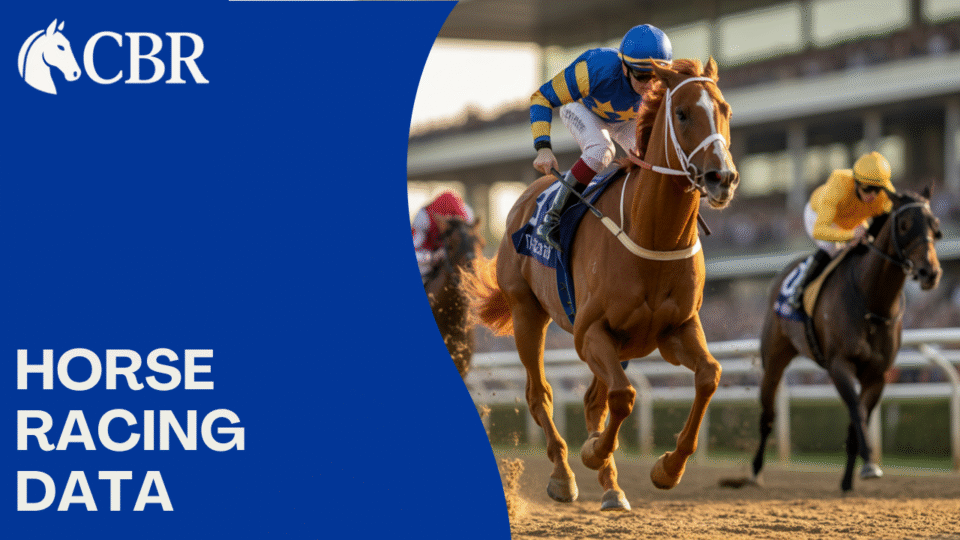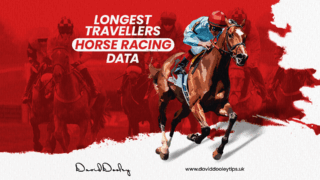Horse racing data gives you precise information about races, horses, jockeys, trainers, and betting odds, so you can make better decisions. Access to detailed statistics and historical results means you can spot patterns that influence outcomes and enhance your strategy. Reliable data sources provide insights on pace, form, price movements, and race conditions, which are essential for informed betting or trading.
The availability of comprehensive databases allows you to filter and analyse data based on your criteria, which means you can create personalised systems tailored to your approach. This data includes everything from race distance and going to jockey success rates, helping you understand factors that affect performance. Using this information, you can evaluate profitability and identify trends that improve your chances of success.
You will also benefit from sites offering exports to Excel and tools for deeper statistical analysis, so you can test different strategies effectively. These resources let you save and refine your methods over time, which means you continually improve your edge. As a result, accessing quality horse racing data transforms how you approach betting, moving beyond guesswork to data-driven decisions.
Contents
What Is Horse Racing Data?
Horse racing data consists of detailed records and measurements about horses, races, and track conditions. It helps you assess each competitor’s performance and the factors influencing race outcomes. Understanding its different forms, sources, and impact on racecourse operations is essential for accurate analysis.
Types of Horse Racing Data
Horse racing data covers various categories that directly affect how horses perform. Performance data includes race times, finishing positions, and speed ratings, which reveal a horse’s ability under specific conditions. These figures show how well a horse reacts to different distances and track types.
Betting odds express bookmakers’ and public opinions on each horse’s chances, influencing how you interpret potential winnings. Pedigree data tracks bloodlines, indicating likely strengths such as speed or stamina based on ancestry.
Biometric data recently gained importance, measuring heart rates and stride length using sensors, so you can monitor a horse’s fitness and condition in real-time. Lastly, track and environmental data detail surface types and weather, affecting how horses perform on race day.
How Is Racing Data Collected?
Racecourse data is collected through a mix of technology and manual record-keeping to ensure precision. Electronic timing systems capture race times to the millisecond, providing exact figures needed for analysis. These systems are crucial for accurate performance comparisons across different events.
GPS and sensor technologies track horses’ movements and biometrics during races. This data provides insights into speed fluctuations and physiological responses, helping trainers optimise training plans.
Additionally, databases and specialised software compile race results, odds, and performance stats from various events, enabling quick and comprehensive access. These systems organise data efficiently so that you can easily identify patterns and trends relevant to betting or training decisions.
Importance for Racecourse Performance
Racecourses rely on data to maintain safety and competitive fairness, which affects the quality of races you watch or bet on. Monitoring track conditions through sensors helps staff adjust maintenance schedules and race timings, reducing risks to horses and jockeys.
Data use also assists in managing the number of runners to prevent overcrowded fields that could compromise safety. You benefit from this as better-managed racecourses provide a fairer contest for all competitors.
Moreover, detailed insights into race conditions allow you to tailor your strategies based on likely environmental influences. This means you can make well-informed decisions when selecting horses or predicting race outcomes.
How Do Punters Use Horse Racing Data?
You apply horse racing data to make more informed decisions. This includes assessing past performances, tracking betting tendencies, and identifying strategic race factors like distance travelled. Using data sharpens your selection process and reduces guesswork.
Analysing Form and Trends
You examine a horse’s recent form by reviewing its finishing positions, race distances, and class levels. This reveals patterns indicating suitability for the upcoming race. A horse with consistent top finishes at similar distances often performs reliably.
Tracking trainers’ and jockeys’ records is essential because some thrive under certain conditions or at specific courses. You also consider track conditions since some horses excel on soft or firm ground. Ignoring these details can lead to inaccurate predictions.
By comparing these elements over time, you identify trends such as improving or declining form. This data-driven approach helps you distinguish horses that are likely to perform better than their odds suggest.
Betting Market Insights
You monitor betting market movements to uncover where the money is going, which reflects insider confidence. Sharp changes in odds, especially on betting exchanges like Betfair, often hint at valuable opportunities.
Understanding market trends ties into reading layers of data, including trainer patterns and jockey bookings that influence betting shifts. Late market moves frequently result from updated information about track conditions or non-runners.
Using market data enables you to adjust your stakes or reconsider selections as the race approaches. This responsiveness can protect you from poor choices and improve your chances of finding value bets.
Spotting Longest Travellers
You identify the longest travellers—horses coming from distant stables or regions—because travel can impact form either positively or negatively. Some horses handle travel well and perform better away from their regular tracks.
Spotting these can alert you to potential value since they might be underestimated by betting odds. You combine this with form analysis to determine if travel affects the horse’s recent performances or fitness.
Considering travel alongside pace maps and race conditions lets you judge if a longest traveller gains an advantage or faces challenges. This information can guide you in recognising less obvious contenders.
Which Key Metrics Impact Betting Strategies?
Successful betting depends on knowing which data points influence outcomes. You need to track the latest race entries, assess trainer effectiveness, and evaluate jockey performance to make informed decisions. These factors often determine how well a horse performs under specific race conditions.
5-Day Declarations and Early Entries
5-day declarations reveal which horses remain in contention close to race day. Because trainers often enter several horses but scratch some later, monitoring these declarations helps you narrow down contenders and avoid backing withdrawn runners. Early entries also show a horse’s intended races ahead of time, allowing you to spot consistent campaigners or horses stepping up to new challenges.
Changes between early entries and final declarations can indicate shifts in race strategy or health issues. The value comes from tracking which horses stay declared and how often they appear in recent races. This insight means you focus on likely runners and avoid spoiling bets on horses unlikely to participate.
Identifying In-Form Trainers
Trainers with recent success in similar race conditions offer a reliable edge. Their current winning percentages indicate form, so you should prioritise trainers posting high returns over comparable distances and surfaces. In-form trainers usually understand when a horse is primed to perform well or when to hold it back.
You should also assess a trainer’s record with specific horse types, such as sprinters or stayers. Trainers achieving strong profitability when switching surfaces or distance levels can significantly affect outcomes. Tracking trainers with consistent returns means backing horses prepared carefully and appropriately for their upcoming races.
Evaluating In-Form Jockeys
Jockey form impacts race results substantially, especially when riders thrive on certain surfaces or distances. You must examine winning rates and profitability of jockeys in recent races to understand their influence. High-performing jockeys often improve a horse’s chances because of superior race tactics and timing.
You should differentiate between turf and dirt results, as some jockeys excel on one but lag on the other. Also, note whether a jockey has a history of success with a particular trainer or horse, since these combinations often deliver stronger performances. Prioritising jockeys with current form helps you make sharper betting choices.
What Role Do Equipment Changes Play in Data Analysis?
Equipment changes provide critical data points that impact how you interpret a horse’s performance. These modifications affect variables like speed, stride, and focus, which in turn influence predictive models. Analysing new equipment involves comparing historical data with performance post-change for precise insights.
First-Time Blinkers
When a horse wears blinkers for the first time, it can alter its concentration and behaviour during a race. Blinkers limit the horse’s peripheral vision, reducing distractions and promoting forward focus. This adjustment often improves race consistency and pace control.
Data analysis of first-time blinkers centres on identifying patterns such as smoother strides or fewer instances of the horse shying off course. You should track race splits, finishing positions, and behavioural changes before and after the introduction. Statistical models typically highlight increased steadiness or speed variance reductions linked to these equipment changes.
Careful data cleaning is essential to isolate the blinker effect from other variables like track conditions or jockey influence. As a result, you can better evaluate whether first-time blinkers correlate with improved outcomes or behavioural stability.
First-Time Visors
Visors play a similar but distinct role from blinkers by partially restricting a horse’s vision while also shading its eyes. When a horse wears visors for the first time, this can decrease glare and calm nervous tendencies, enhancing focus without the full visual limitation of blinkers.
Your analysis should measure changes in race tempo and positional tactics following first-time visor use. These often manifest as improved early positioning or steadier finishes. You need to integrate biometric data like heart rate and stride length, where possible, to assess the physiological impact of visors.
Visors may lead to subtle performance changes that require detailed statistical tools to detect. Using clustering or regression models helps separate the visor’s effects from other equipment or environmental factors. This means you gain clearer insight into whether first-time visors provide a measurable advantage on race day.
How Is Race Information Turned Into Actionable Tips?
You turn raw race data into practical advice by focusing on key elements like daily performance metrics, standout selections, and race conditions. Each factor refines your assessment to guide your choices more effectively.
Generating Daily Horse Racing Tips
To generate daily horse racing tips, you analyse recent racing data and statistics for every horse in the upcoming races. This involves reviewing past performances, looking at consistency in finishing positions, and comparing speed ratings over similar distances. You also factor in jockey and trainer success rates, which significantly influence outcomes.
Website tools and databases offer updated info on recent form and odds, making it easier to spot horses with strong potential. You examine performance trends rather than isolated results to avoid misleading signals. This method ensures your daily tips are based on relevant, current data rather than luck.
Selecting Nap Selections
Nap selections are horses chosen as the most confident bets of the day. To determine these, you weigh multiple data points, such as top speed figures, reliable trainers, and jockeys, and horses showing marked improvement in recent races. Naps often carry the strongest backing from the analysis and are expected to perform well under race conditions.
You also consider how well the horse adapts to the specific track and distance. Consistency over time and form peaks are key indicators that a horse qualifies as a nap. Your nap picks rely on solid evidence, reducing guesswork and steering bets toward more reliable choices.
Incorporating Race Conditions
Race conditions dramatically affect how horses perform, so you must integrate this data into your tips. Variables such as track surface (e.g., turf or synthetic), weather impacts, and ground firmness all influence race outcomes. Horses that excel on firm ground may struggle with wet or heavy tracks, which alters their chances significantly.
You also assess post position and race pace factors, which can favour certain running styles. Taking these race-specific conditions into account enables you to adjust your advice realistically, ensuring you consider how external factors shift the likely results and maximise the reliability of your tips.
How Do Tipsters and Community Expertise Enhance Horse Racing Data?
You benefit from a more complete understanding of horse racing data when expert tipsters and collective insights add context. Their analysis sharpens raw data into actionable betting advice and influences how betting markets adjust to shifting information.
Interpreting Data by Expert Tipsters
Tipsters convert complex race metrics into clear predictions because they merge data with practical knowledge. They interpret speed ratings, jockey form, and trainer trends alongside subtle factors like equipment changes or race conditions. This means you receive guidance that balances statistics with on-the-ground knowledge.
Their role is critical because machines can calculate numbers but often miss nuances in horse behaviour or track variables. Expert tipsters often spot value bets by identifying horses ahead of the handicapper or well-supported by insiders. This human element ensures data doesn’t remain abstract but becomes usable and timely advice for your betting strategy.
Impact of Tipsters on Betting Markets
Tipsters influence betting markets by shifting money toward selections backed by strong analysis. When a tipster highlights a horse as “best backed” or in form with jockeys and trainers, bettors adjust their stakes accordingly. This action causes odds to shorten or lengthen, reflecting real-time confidence in entries.
The effect ripples through the market, exposing where experts see value beyond raw data. You can track how market movements respond to tipster tips as a gauge for possible opportunities. Informed tipster opinions often expose inefficiencies in odds, helping you identify bets with better expected returns based on collective wisdom and analysis.




